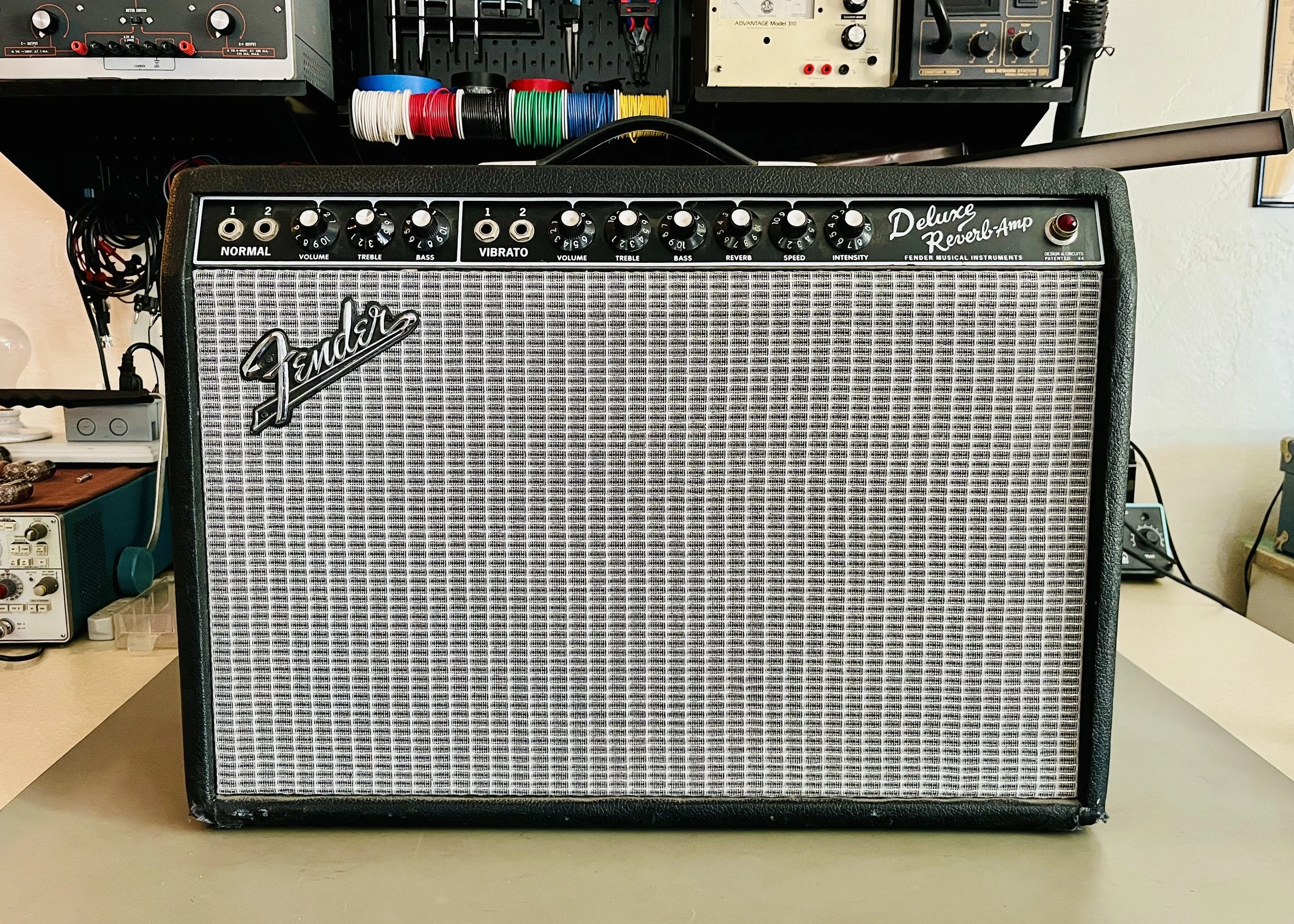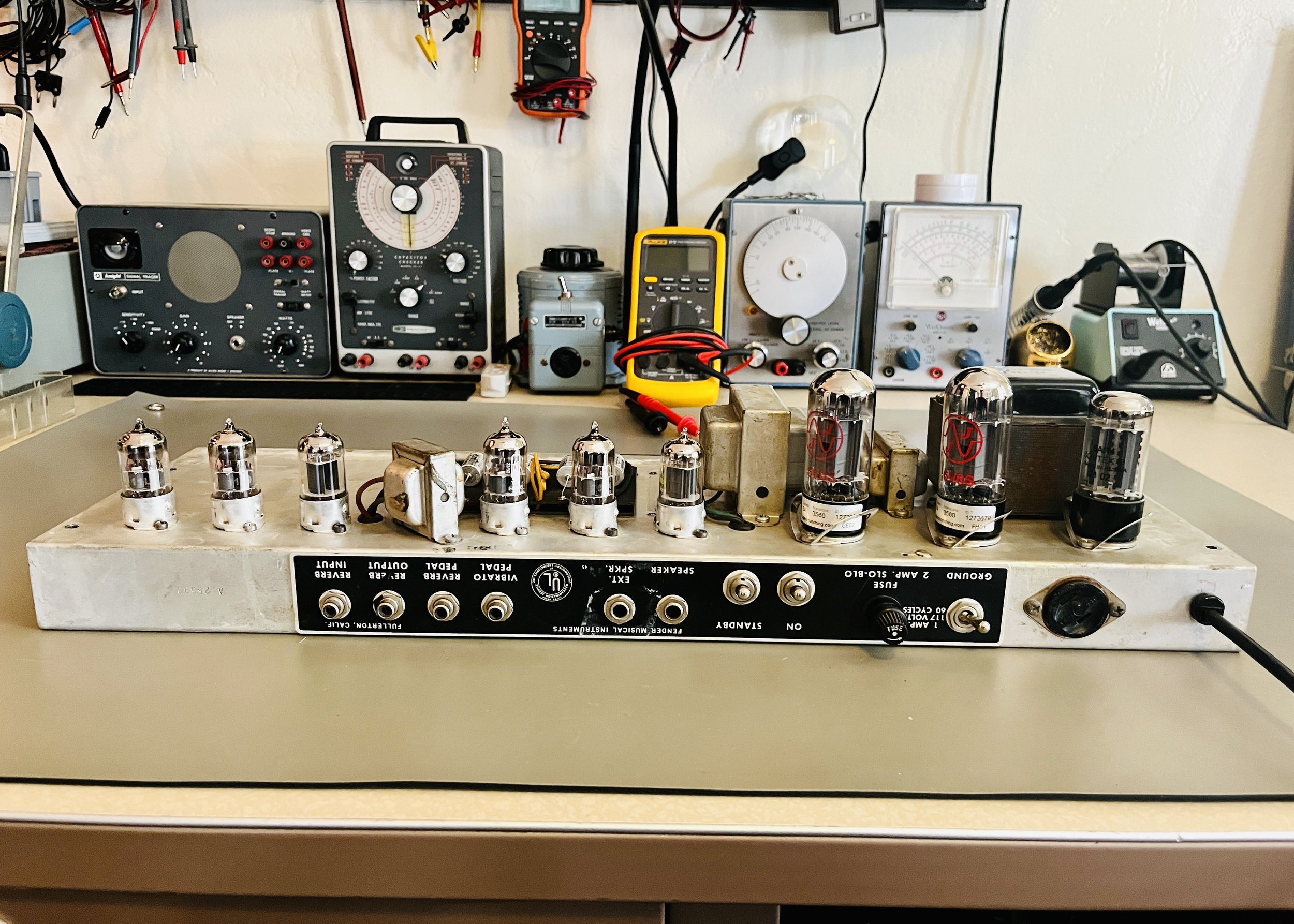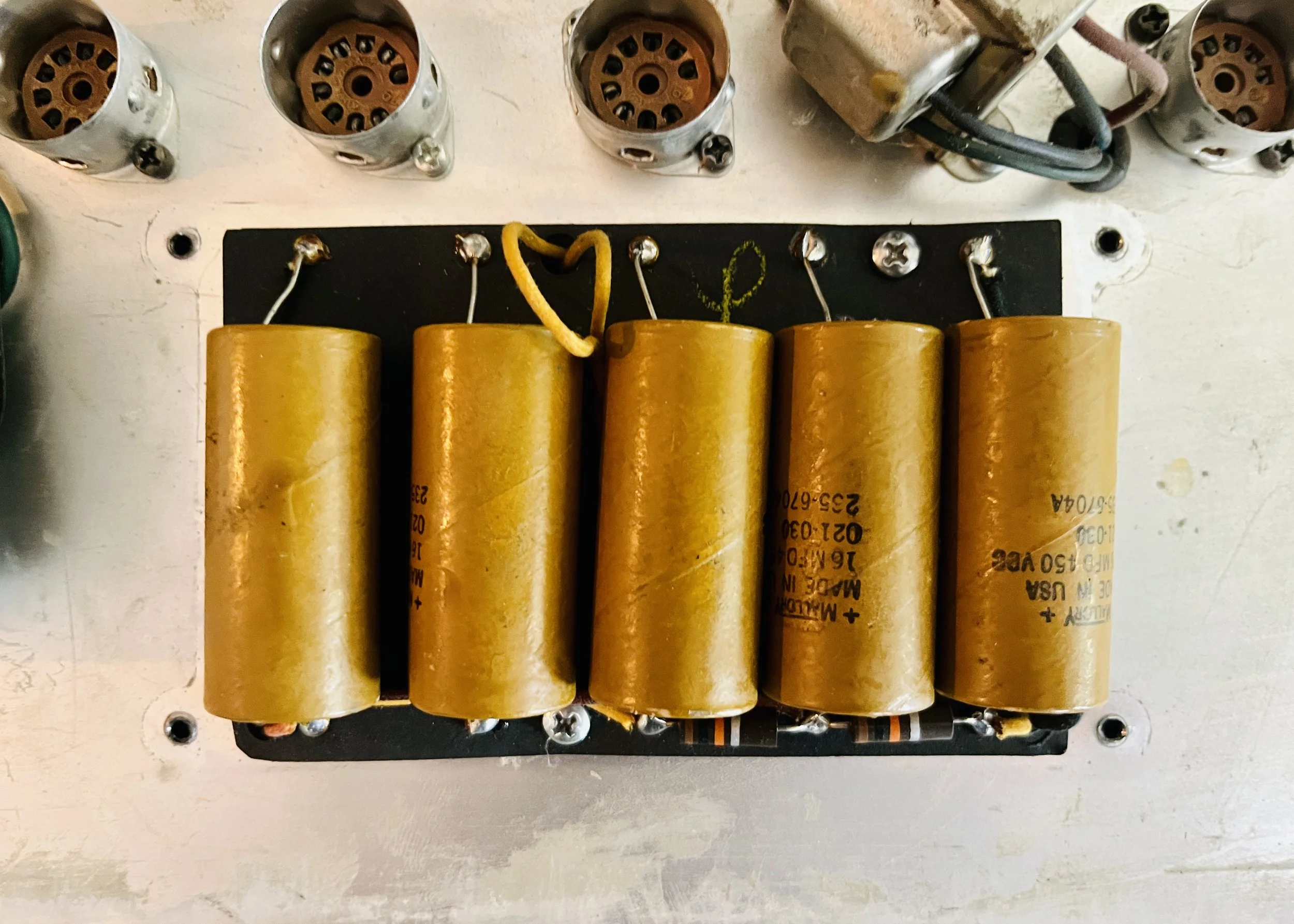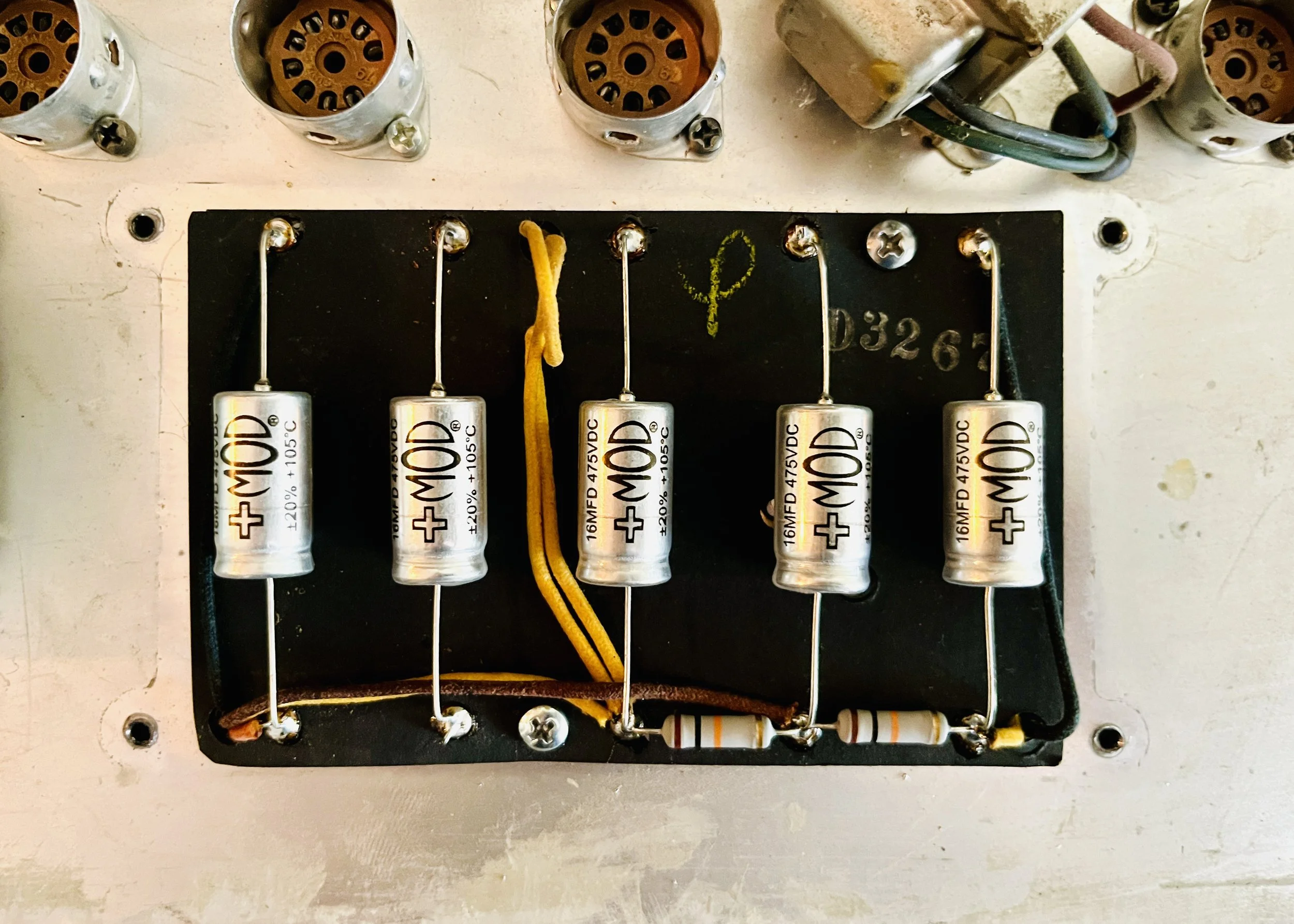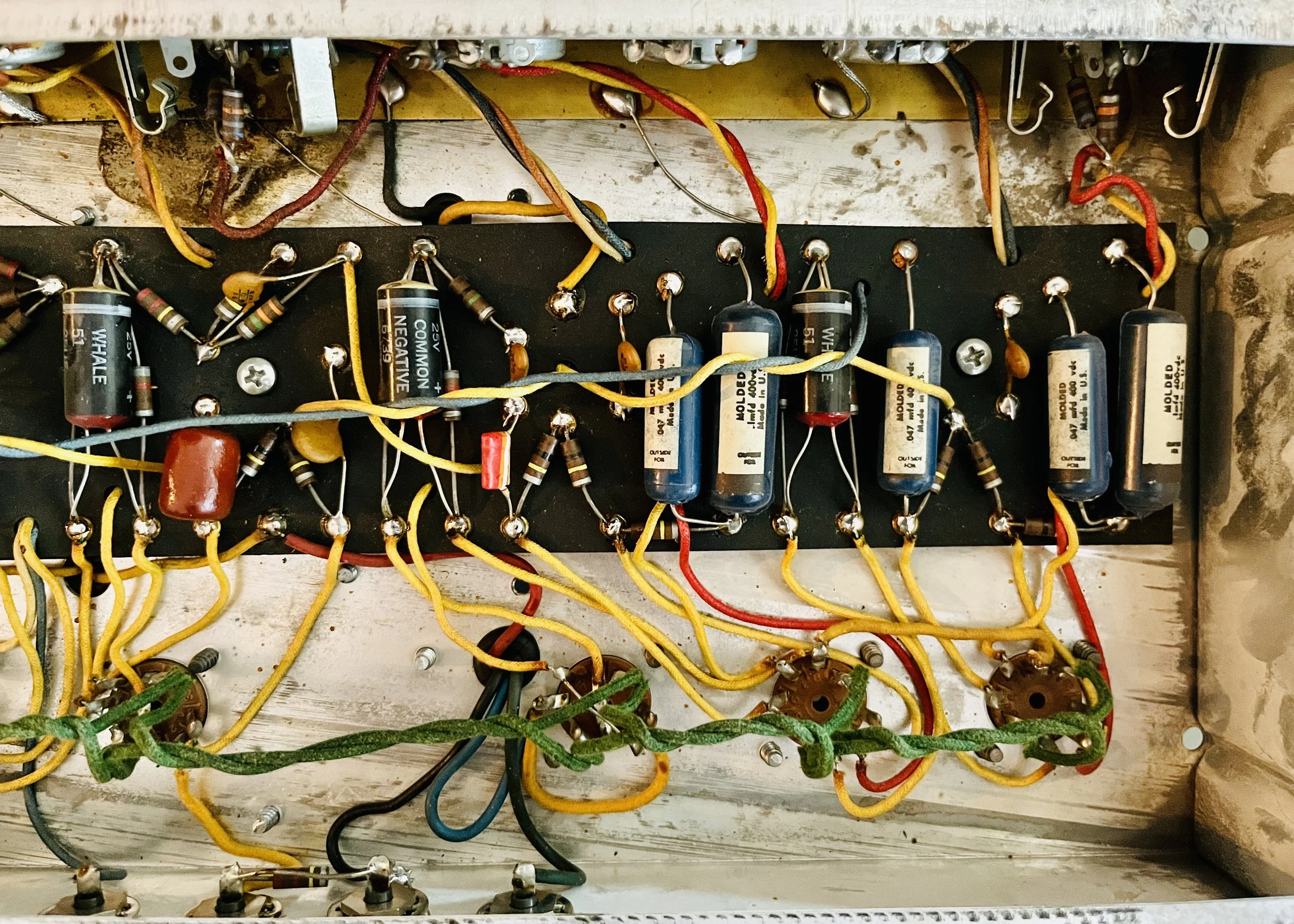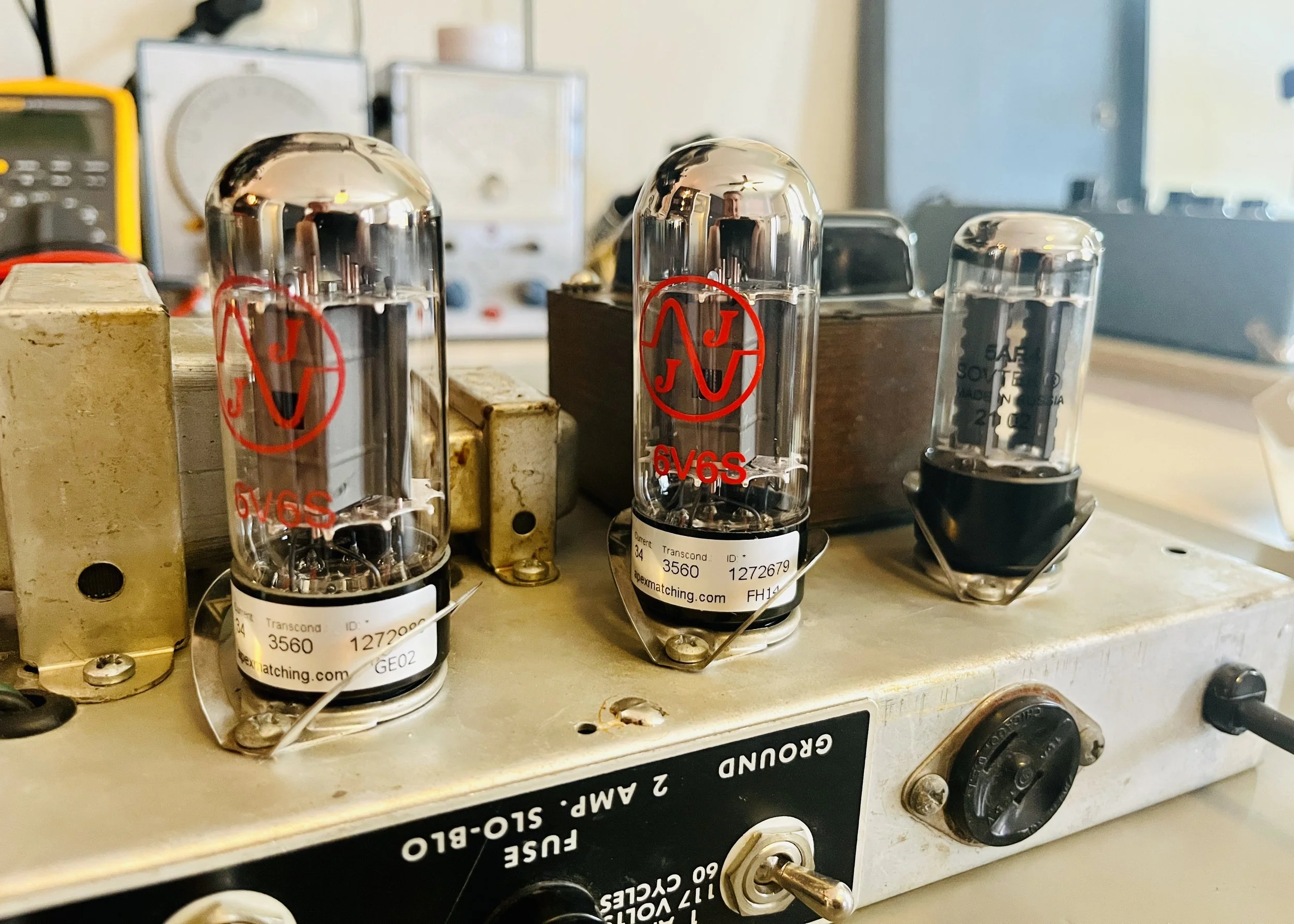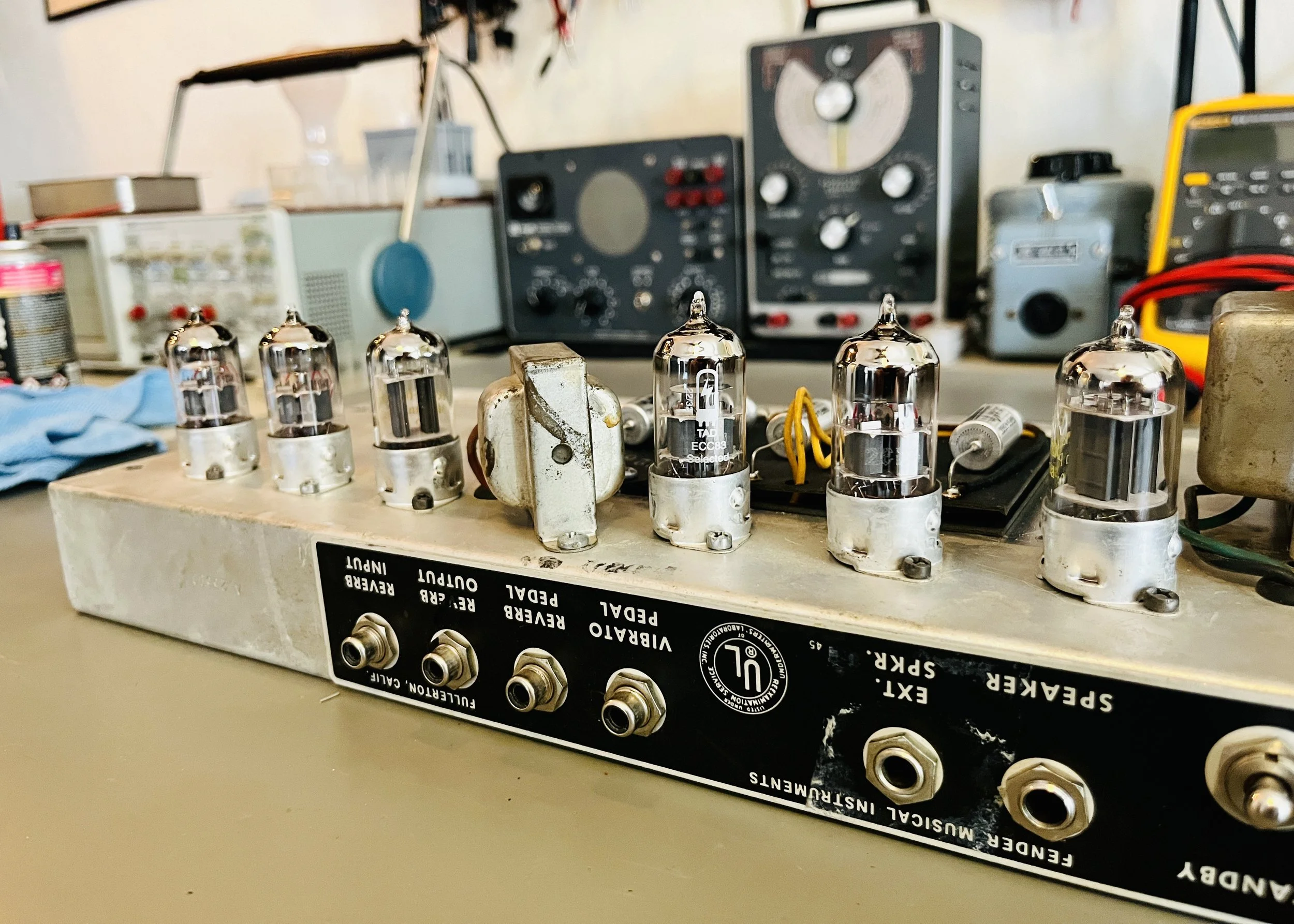1966 Fender Deluxe Reverb
This is one of the amps that defines the Fender/American sound and is an enduring classic both in clubs and the recording studio. The amp came in after having been to another tech twice and still was not right - it blew fuses, dropped power, and sounded like garbage. And that makes sense - even after two repairs this amp came out each time without any of the standard work a 50+ year old amp needs. It still had all it’s original failing electrolytic capacitors, out-of-spec power dropping resistors, blown screen resistors, loose/dirty tube sockets, and old worn preamp tubes.
I tell my customers that I am not the fastest or least expensive option for repair, but I always do every piece of preventative maintenance possible, and the amps I give back are always done right. It doesn’t matter how classic, rare, or collectible your amp is - if you actually turn it on and play it you cannot have 30+ year old caps and crazy out-of-spec resistors in place - your very collectible amp will blow it’s transformers and at the least just not sound like it should. When these amps were made they did not come with decades old failing parts inside - so this cult of originality and the tech’s and online blogs that support it are not based in factual information, or engineering, or science - they are promoting the idea that old deteriorating parts provide some otherwise un-obtainable magic to tube amps and therefore should be left in place no matter what. This is simply not true, nor is it good practice. But enough of the soapbox rant…
Amp was fully restored. All caps were replaced with upgraded voltage and temperature rated MOD/Vishay brand electrolytic’s. New 2 Watt Metal Oxide power dropping resistors were installed for better reliability and lower noise floor. New 3 Watt Cement Screen Grid resistors were installed for reliability reasons. New vintage spec correct Carbon Comp 1/2 Watt resistors were installed for the plates and cathodes of the preamp tubes to bring the circuit back to factory spec, reduce crackling/popping, and give the amp long term reliability. This ensures collector’s grade build quality and value to the amp. The AC cord was re-installed for safety reasons - ground wire was not left longer than the hot/neutral wires and soldering was not secure enough. The speaker cable was replaced as it had exposed wires - this was done with a vintage Fender style cable.
The original tubes (a mix of NOS and new) did not test good and were all replaced - except V9, the Sovtek 5AR4 rectifier. V1/V2 = JJ 5751 (The 5751 - which has %30 lower gain than a 12AX7 but is otherwise the same tube - was used in position V1/V2 to help increase headroom and put the gain in a sweeter spot), V3/V6 = EHX12AT7, V4 = JJ 5751 (Here to lower the reverb noise floor and make the reverb control more usable), V5 = JJ 12AX7S, V7/V8 = JJ 6V6S Matched Pair, V9 = Sovtek 5AR4. These tubes were picked for best tone, reliability, and increased headroom. The 6V6GT’s Fixed Bias was set to %64 Class AB Plate Dissipation with a B+ of 438VDC. The pots were sprayed out and the amp was cleaned inside and out. Amp now functions perfectly.

